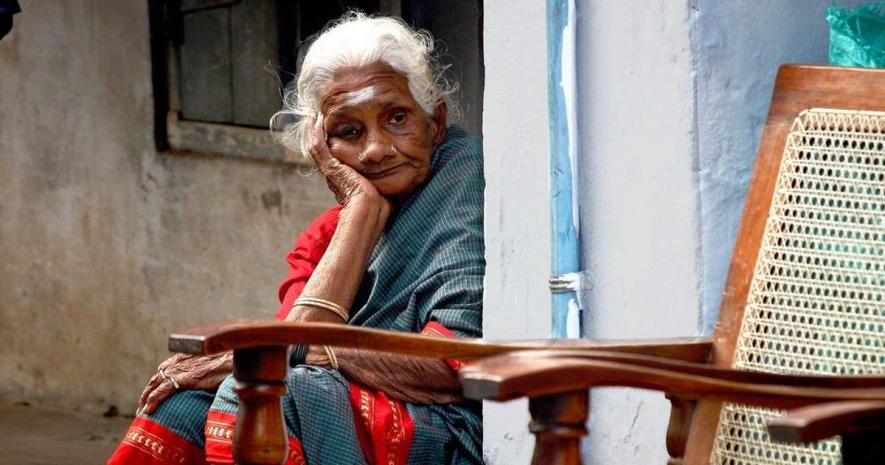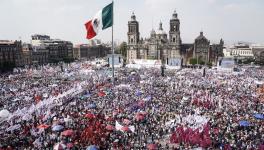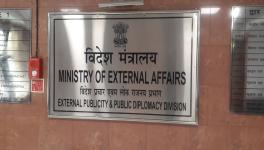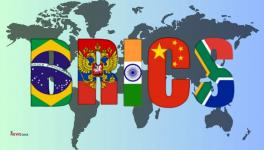International Day for Older Persons: Misplaced Priorities

Image credit: Scroll.in
“Resilience of older persons in a changing world” was the theme for observing world elderly day on October 1, 2022. The United Nations started observing October 1 as the world elderly day in 1991. The UN General Assembly voted for observing this day as the international day for older persons on December 14, 1990.
Resilience is a buzzword these days emanating from UN agencies. However, this focus on the resilience of older people, instead of the resilience of the socio-economic system in engaging with the problems of older people, sounds like putting the cart before the horse.
The problems being faced today by the elderly, particularly relating to their health, housing etc., emanate from the socio-economic system – neoliberal capitalism – that treats even human beings as commodities. And since the elderly have a reduced capacity in the production process, their treatment is also neglected by the socio-economic system.
Hence resilience of the elderly, which sounds good, blurs the rightful treatment that the older people must get from the system, the repository of which is the State.
Condition of the older people
India’s elderly population is around 130 million. This is a huge number and requires urgent intervention from the State to ensure decent living for them. According to a Help Age India report, around 53 million older people live below the poverty line. Their health demands are also very important. Nearly 11 million people are reaching the stage of blindness without treatment. Around 96 million must work in order to survive; there is hardly any pension, provident fund gratuity, or medical coverage for older people. Those elders over the age of 80 years are estimated to reach 53 million by 2051.
By 2050, the elderly population will be triple, almost 340 million in India, according to the same report.
The United Nations Survey Report in India has castigated and said, “India is no country for the elderly”.
Why?
· 62.1% of the elderly in India did not get long-term and palliative care.
· 52.4% primarily lack family support.
· Over 75% of the elderly hardly have any social interactions.
· 67.6% of the elderly have to take care of their family and babysit children.
Those who are economically vulnerable face greater challenges
The economically weaker sections of the society, losing support from family and the State in social sectors, are the worst hit. Around 90% of the elders are from the unorganised sector.
Destitute widows in India are more than 20 million; just 10% have a pension or financial support.
The healthcare provision is abysmally low. Only 25% can afford healthcare facilities provided by the government.
Isolation, loneliness and neglect are three important features connected with the older people in India.
· 11% live alone
· By 2025, 25% of 60+ and 40% of 70+ will live alone if the current conditions are not reversed.
· 13% feel trapped within their own homes.
· 21% feel alone with no social support or social circle.
· 25% have been abused by their own kin.
The sheer magnitude of the number of elderly people facing social problems reminds one of the perils of the developmental model that is being pursued. It is the resilience of the system that is important and not the resilience of the elderly. The resilience of the elderly implies that efforts are to be made to make them adapt to the situation and do nothing to change the system.
Faulty developmental model
The model of development, particularly after the 1990s in India, has seen massive erosion of the social support system. This erosion has taken place both at the planning level and also at the societal level.
Take for example the planning agencies, the parastatals like the Delhi Development Authority, Mumbai Development Authority, etc. Such parastatals are responsible for building, designing and articulating the modern forms of city development throughout the country.
In none of these interventions made by these planning authorities, the discourse has been elderly-friendly, forget about being steered by reasons where the elderly are kept as a priority. The planning agencies have never ever thought of an ageing population and the needs that such a section of society requires. Never have they been consulted by the planning agencies on the kind of cities that should be developed in order to provide them with better services.
These parastatals have been guided by business interests and never ever has a reference been made to the elderly. What kind of streets are required, what kind of social infrastructure is required, and how many centres for both health and social services are required in a given neighbourhood for the elderly are some of the questions never discussed by these agencies.
Most of the planning in the towns and cities is based on spontaneity which is neither desired nor sustainable, nor resilient.
What the UN should focus on is not just the resilience of the older people but the resilience of the system ensuring that the older people are considered a part of the society and not just a spendthrift non-productive force!
The writer is the former deputy mayor of Shimla, Himachal Pradesh. The views are personal.
Get the latest reports & analysis with people's perspective on Protests, movements & deep analytical videos, discussions of the current affairs in your Telegram app. Subscribe to NewsClick's Telegram channel & get Real-Time updates on stories, as they get published on our website.
























